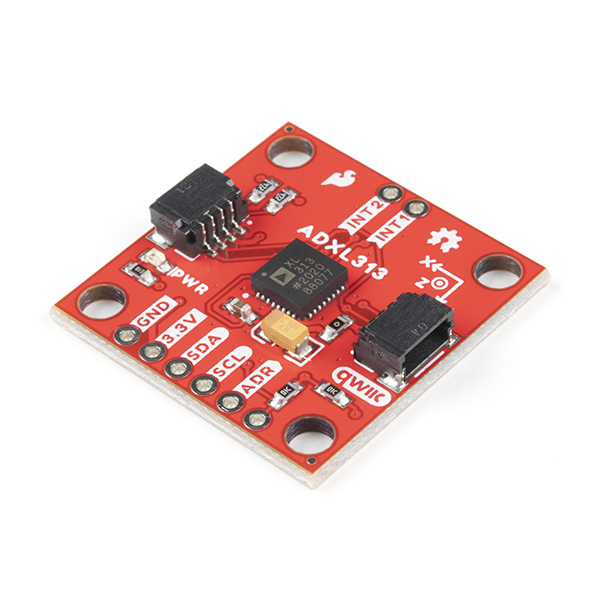Description: The SparkFun ADXL313 Breakout is a low power, high resolution (up to 13-bits) 3-axis accelerometer for measurement up to ±4g. This breakout measures the static acceleration of gravity in tilt-sensing applications, as well as dynamic acceleration resulting from motion or shock. Digital output data is formatted as 16-bit two's complement and is accessible through the on-board Qwiic connectors (I2C) or SPI.
The ADXL313 Breakouts high resolution and low noise enable resolution of inclination changes of as little as 0.1°, while a built-in FIFO facilitates using oversampling techniques to improve resolution to as little as 0.025° of inclination. The integrated 32-level FIFO can also be used to store data to minimize host processor intervention, resulting in reduced system power consumption. Additional low power modes enable intelligent motion-based power management with threshold sensing and active acceleration measurement at extremely low power dissipation.
Getting the ADXL313 Qwiic breakout set-up is easy. Simply supply the accelerometer with power and communication via the Qwiic connector to your chosen Qwiic development board and you will be good to go. Example use cases for the ADXL313 from Analog Devices include car alarm, hill start aid (HSA) systems, electronic parking brakes, and data recorders applications (black boxes).
Features:
- Measurement Range: ±0.5g, ±1g, ±2g, ±4g
- High Resolution (up to 13-bit)
- Low Power:
- Less than 300 µA at maximum data rate
- 0.1 µA in Standby Mode
- Low Noise (150 μg/√Hz)
- Built-in Sensing Functions:
- Activity (presence of motion) & inactivity (absence of motion)
- User defined acceleration level on any axis
- Functions can be mapped to interrupt pins
- 32 level FIFO for reduced processor intervention & system power consumption
- Self-Test Functionality
- I2C Address (7-bit): 0x1D (Default), 0x53
- 2x Qwiic Connectors
- SPI available on PTH header pins (3-wire and 4-wire modes)
Documentation and Downloads









